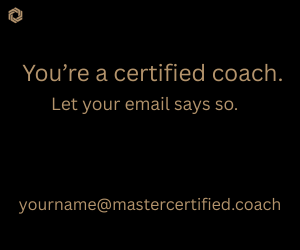Emotional intelligence is a framework we both actively use in our coaching, and we’ve noticed a pattern over time that many clients appear to overuse or underuse empathy or assertiveness and rarely have a balanced use of both. In one recent example, a female executive at a successful startup engaged with Kelley after her supervisor, another female executive, told her she needed to be less empathetic to be effective and suggested she could be more like her male colleague. Kelley asked, “do you believe you would benefit from leading more like your male colleague?” Her new client responded, “no, he’s a jerk.” In fact, she didn’t need to be less empathetic, rather, she needed to further develop her assertiveness to balance her empathy which allowed her to successfully manage her direct reports and meet the department’s organizational goals.
Why is it that when we ask people to describe empathy, the descriptions they provide don’t reflect the word’s actual definition? Perhaps it’s because so many of us have experienced empathy out of balance – a colleague enmeshed in another’s emotional experience, or on the other hand, completely detached. To be clear, empathy is defined as our ability to recognize, understand and appreciate how others feel and to generate an appropriate behavioral response. Healthy expressions of empathy do not benefit one person to the detriment of the other.
Healthy empathy is the ability to accurately read another person’s emotions and to respond appropriately, which requires a well-developed emotional intelligence.
You will be hard pressed to find someone suggesting we should be less empathetic these days. But while empathy has gotten a green light, we have watered down its meaning. It doesn’t mean to sugar coat the truth or not to speak about real challenges. Rather, healthy empathy is the ability to accurately read another person’s emotions and to respond appropriately, which requires a well-developed emotional intelligence.
Assertiveness also gets a bad reputation. Being too assertive is equated with being aggressive. However, assertiveness is defined as the ability to clearly know what you think, feel and believe, and to express yourself in ways that neither diminish your own self-value and self-worth nor harm anyone else’s. According to the research, assertive organizations value openness, honesty and respect of people (Townsend, Annie. 2007. Assertive Leadership. Springer).
Marilyn has worked with an organization that has embraced empathy full-throttle. Although in practice the organization’s definition has been watered down and has embraced empathy over accountability, over constructive feedback, and as a way to avoid tough conversations. The unfortunate result has been an increased dependence on giving answers rather than a culture that encourages deep thinking. At its worst, victim thinking is rewarded. Challenging workers in the organization is viewed as having a lack of empathy and everyone, including the organization, is paying the price. Without a healthy amount of assertiveness including direct communication and constructive feedback, both organizational and personal growth suffer.
How can coaches best support clients to improve healthy and balanced expressions of empathy and assertiveness in the workplace? We propose the following:
1. First, take an honest look at yourself.
Do you coach from a place that favors one of these competencies over the other? Is there a gap between the real definitions of these social emotional skills and how you perform them? How would friends, colleagues and clients describe you?
2. Get familiar with tools and resources.
There are plenty of tools designed to improve emotional intelligence in these important areas. Read the research or enroll in a training that can support your own development.
3. Increase your ability to spot when empathy and assertiveness are out of balance.
When we describe out of balance, we mean not balanced by the other competency. An over reliance on one competency without the benefit the other brings. What does this look like for clients? What does this look like in systems and/or organizations?
4. Script some coaching questions.
As coaches we get very good at coming up with questions in the moment, however, contemplating questions ahead of our sessions can help us move away from our own biases. These may be questions for us, not for our clients to hear.
5. Move out of your comfort zone.
Great coaches help clients move out of their comfort zone in order to grow and develop. Great coaching requires that we do the same. Who can help hold you accountable for growing toward a more balanced expression of empathy and assertiveness in the areas of your life?
When empathy is too high, emotions drive decisions, growth is limited, and one party benefits at the expense of another. When assertiveness is too high it may feel aggressive and can limit contributions from others. This often creates a situation that benefits one person or group more than another. When empathy and assertiveness inform and modify each other, they fade into the background. We simply notice great leadership in action!
Disclaimer
The views and opinions expressed in guest posts featured on this blog are those of the author and do not necessarily reflect the opinions and views of the International Coach Federation (ICF). The publication of a guest post on the ICF Blog does not equate to an ICF endorsement or guarantee of the products or services provided by the author.
Additionally, for the purpose of full disclosure and as a disclaimer of liability, this content was possibly generated using the assistance of an AI program. Its contents, either in whole or in part, have been reviewed and revised by a human. Nevertheless, the reader/user is responsible for verifying the information presented and should not rely upon this article or post as providing any specific professional advice or counsel. Its contents are provided “as is,” and ICF makes no representations or warranties as to its accuracy or completeness and to the fullest extent permitted by applicable law specifically disclaims any and all liability for any damages or injuries resulting from use of or reliance thereupon.
Post Type
Blog
Audience Type
Coach Educators, Experienced Coaches, External Coaches, ICF Chapter Leaders, Internal Coaches, New Coaches, Professional Coaches, Team and Group Coaches
Topic
Coaching Toolbox, Discover - Your Coaching Career
Related Posts
How Conscientious Inclusion Can Improve Your Coaching
Coaching continues to evolve as the world becomes more interconnected, multicultural, and…
The Coaching Trap: When Empathy Becomes Exhaustion
Prepare yourself for the fact that this will not be about you…
Your Guide to Preparing for the ACC Exam
Much like a smartphone upgrade that introduces improvements for a smoother user…









